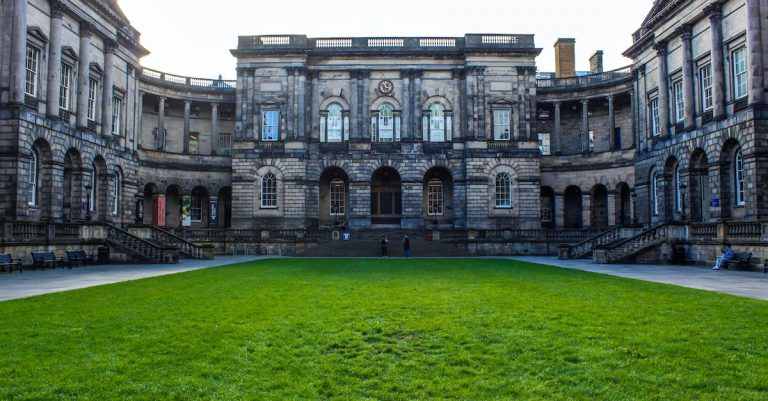In today’s fast-paced world, time is a precious commodity, and the length of the school day can significantly impact a child’s overall well-being and academic performance. While some countries prioritize longer school hours, others have embraced a more condensed approach, recognizing the importance of striking a balance between education and personal growth.
If you’re short on time, here’s a quick answer to your question: Finland has one of the shortest school days in the world, with students typically attending classes for around 5 hours per day.
In this comprehensive article, we’ll delve into the intricacies of school schedules across various nations, exploring the factors that influence the duration of the school day, and the potential benefits and drawbacks associated with shorter or longer instructional periods.
We’ll also examine the cultural and educational philosophies that shape these decisions, providing you with a well-rounded understanding of this fascinating topic.
The Finnish Model: Embracing Efficiency and Balance
Finland’s Educational Philosophy
Finland’s approach to education is rooted in a philosophy that prioritizes quality over quantity. The Finnish education system is widely acclaimed, consistently ranking among the best in the world according to the OECD’s Programme for International Student Assessment (PISA).
At the heart of this success lies a belief in fostering a balanced and holistic learning environment for students. The Finnish model emphasizes the importance of well-rounded development, recognizing that academic achievement should not come at the expense of a child’s overall well-being.
The Structure of the Finnish School Day
In Finland, the school day is relatively short compared to many other countries. Primary school students typically attend classes for approximately 4-5 hours per day, while secondary school students have a slightly longer day of around 6-7 hours.
This structure allows for ample time for breaks, extracurricular activities, and leisure pursuits. Here’s a breakdown of a typical Finnish school day:
- Classes start around 8:00 AM or 9:00 AM.
- Students have a 15-minute break after every 45-60 minutes of instruction.
- The school day ends between 1:00 PM and 2:00 PM for primary students, and around 3:00 PM for secondary students.
- Homework assignments are minimal, allowing students to fully recharge and engage in other activities.
Benefits of a Shorter School Day
The Finnish model’s shorter school day offers numerous benefits for both students and educators. Here are some key advantages:
- Improved focus and attention: With shorter periods of instruction and frequent breaks, students can better maintain their concentration and engagement throughout the day.
- Reduced stress and burnout: The shorter schedule helps prevent excessive academic pressure and burnout, promoting a healthier work-life balance for students and teachers alike.
- Opportunities for extracurricular activities: The ample free time allows students to pursue hobbies, sports, and other interests, fostering a well-rounded development.
- Better work-life balance for teachers: Teachers in Finland have more time for lesson planning, professional development, and personal pursuits, contributing to job satisfaction and retention.
The Finnish model demonstrates that a shorter school day can be highly effective when combined with a strong educational philosophy and a focus on quality learning experiences. By prioritizing balance and efficiency, Finland has created an environment that nurtures both academic success and overall well-being for its students.
While the Finnish approach may not be a one-size-fits-all solution, it serves as an inspiring example for countries seeking to optimize their educational systems.
International Perspectives: A Global Comparison
School Days Around the World
The length of the school day can vary significantly across different countries and cultures. According to a study by the Organisation for Economic Co-operation and Development (OECD), the average length of a school day in OECD countries ranges from 4 to 8 hours.
However, there are some notable outliers. For example, students in Finland, known for its top-performing education system, spend an average of 5 hours and 40 minutes in school, while their counterparts in South Korea, another high-achieving nation, often spend up to 8 hours or more in class.
Cultural and Socioeconomic Factors
The duration of the school day is often influenced by cultural and socioeconomic factors. In some countries, such as Japan and South Korea, long school hours are deeply ingrained in the societal emphasis on academic excellence and competitive entrance exams.
On the other hand, countries like Finland and Norway prioritize a balanced approach, emphasizing not only academic rigor but also personal development and extracurricular activities. Socioeconomic factors, such as parental work schedules and access to after-school care, can also shape the school day’s length.
Balancing Academic Rigor and Personal Development
While longer school days may seem advantageous for academic achievement, research suggests that there is a delicate balance to strike. Excessive school hours can lead to student burnout, stress, and decreased motivation, potentially undermining the very goals they aim to achieve.
On the other hand, shorter school days, when complemented with effective teaching methods and a well-rounded curriculum, can foster engagement, creativity, and a love for learning. Countries like Finland, consistently ranked among the top education systems globally, demonstrate that a balanced approach can yield remarkable results.
Ultimately, the ideal length of the school day is a complex issue that requires careful consideration of cultural values, socioeconomic realities, and the latest research on student well-being and academic achievement.
As the world becomes increasingly interconnected, sharing best practices and learning from diverse perspectives can help shape educational policies that nurture well-rounded, successful individuals – no matter how long or short their school days may be. 😊
The Debate: Shorter vs. Longer School Days
Proponents of Shorter School Days
Advocates for shorter school days argue that extended hours can lead to burnout and diminished productivity among students. They believe that children need ample time for extracurricular activities, family time, and rest to maintain a healthy work-life balance.
According to a study by the American Academy of Pediatrics, prolonged school days can contribute to increased stress levels, fatigue, and even depression in students.
Supporters of shorter school days also point out that quality of instruction is more important than sheer quantity. They argue that well-designed, engaging lessons within a reasonable timeframe can be more effective than lengthy, monotonous sessions that strain students’ attention spans.
😊 Some educational experts, like those at Edutopia, suggest that shorter school days allow for more focused and interactive learning experiences.
Advocates of Longer School Hours
On the other hand, proponents of longer school days believe that extended instructional time can provide students with a more comprehensive education and better prepare them for future academic and professional challenges.
They argue that additional hours allow for a deeper exploration of subjects, more hands-on learning opportunities, and the integration of enrichment programs like art, music, and physical education.
Supporters of longer school days also contend that it helps address achievement gaps and provides a structured environment for students who may lack educational support at home. According to a study by The Brookings Institution, students in longer school day programs demonstrated improved academic performance, particularly in math and reading.
👏
Finding the Sweet Spot: Tailoring Schedules to Local Needs
While the debate between shorter and longer school days continues, many experts suggest that a one-size-fits-all approach may not be the solution. Instead, they advocate for tailoring school schedules to the specific needs and circumstances of local communities.
🤔 Factors such as socioeconomic status, cultural norms, and availability of resources should be taken into consideration when determining the optimal length of the school day.
Some countries and regions have found success with a hybrid model, combining shorter instructional hours with after-school programs or optional enrichment activities. This approach allows for flexibility and caters to the diverse needs of students and families.
Ultimately, the key is striking a balance that promotes academic excellence while prioritizing the overall well-being of students. 🎉
| Country | Average School Day Length |
|---|---|
| Finland | 5 hours |
| South Korea | 8 hours |
| United States | 6.5 hours |
Beyond the Classroom: Extracurricular Activities and After-School Programs
The Role of Extracurricular Activities
While the length of the school day may vary across countries, extracurricular activities play a crucial role in shaping a well-rounded education. These activities, ranging from sports to clubs and hobbies, offer students an opportunity to explore their interests, develop new skills, and foster personal growth beyond the confines of the classroom.
According to a study by the National Center for Education Statistics, approximately 57% of students in the United States participate in extracurricular activities, highlighting the significance of these experiences. 😊
Extracurricular activities not only enrich students’ lives but also contribute to their overall development. Engaging in sports, for instance, promotes physical fitness, teamwork, and discipline. Artistic pursuits, such as theater or music, nurture creativity and self-expression.
Clubs focused on academics, like debate or robotics, foster critical thinking and problem-solving skills. These activities provide a holistic approach to education, complementing the traditional classroom setting. 👏
After-School Programs: Enrichment and Support
In addition to extracurricular activities, many countries offer after-school programs that cater to students’ diverse needs. These programs can range from academic tutoring and homework assistance to recreational activities and enrichment courses.
According to a report by the Afterschool Alliance, approximately 10.2 million children in the United States participate in after-school programs, with many programs serving low-income communities.
After-school programs provide a safe and structured environment for students, particularly those whose parents work during the afternoon and evening hours. They offer academic support, helping students reinforce concepts learned in school and complete assignments with the guidance of qualified instructors.
Additionally, these programs often introduce new subjects and skills, such as coding, arts and crafts, or foreign languages, fostering intellectual curiosity and personal growth. 🎉
Striking a Balance: Integrating Academics and Personal Growth
While extracurricular activities and after-school programs offer immense benefits, it’s essential to strike a balance between academic pursuits and personal growth. Overloading students with too many activities can lead to stress, burnout, and a lack of free time for rest and relaxation.
According to a survey by the American Psychological Association, nearly half of all teens reported feeling overwhelmed by their commitments.
Effective time management and prioritization are key to achieving this balance. Parents, educators, and students should collaborate to create a schedule that allows for academic excellence while also incorporating extracurricular activities and after-school programs that align with the student’s interests and developmental needs.
By fostering a well-rounded approach to education, students can thrive academically while also developing essential life skills, social connections, and a sense of personal fulfillment. 😍
Conclusion
The length of the school day is a complex and multifaceted issue that varies across countries and cultures. While Finland’s approach to shorter school days has garnered international attention, it’s important to recognize that there is no one-size-fits-all solution.
Each nation’s educational system is shaped by its unique cultural, socioeconomic, and philosophical factors, which ultimately influence the duration and structure of the school day.
As we’ve explored, shorter school days can promote a healthier work-life balance, allowing students to engage in extracurricular activities, pursue personal interests, and prioritize their overall well-being.
However, longer school hours can also provide opportunities for enrichment, academic support, and a more comprehensive educational experience.
Ultimately, the key lies in striking the right balance – one that aligns with the specific needs and priorities of each community, while ensuring that students receive a well-rounded education that prepares them for success in an ever-changing world.
By embracing a holistic approach that considers academic rigor, personal growth, and cultural values, we can create educational systems that truly empower our youth to thrive.






